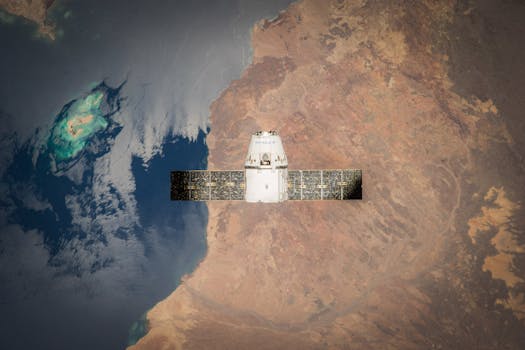
Eyes in the Sky: Advanced Technologies Transforming Earth Observation
Eyes in the Sky: Advanced Technologies Transforming Earth Observation has revolutionized the way we monitor and understand our planet. With the help of satellite imaging, remote sensing, GIS, and GPS, we can now gather detailed information about the Earth’s surface, atmosphere, and oceans. This technology has numerous applications in fields such as environmental monitoring, disaster management, urban planning, and natural resource management.
The use of satellite imaging has become increasingly popular in recent years, with many countries launching their own satellites to gather data about the Earth. Satellite imaging can be used to monitor deforestation, track ocean currents, and detect natural disasters such as hurricanes and wildfires. The data collected from satellites can also be used to create detailed maps of the Earth’s surface, which can be used for navigation, urban planning, and emergency response.
Remote Sensing and GIS
Remote sensing is the process of collecting data about the Earth’s surface without physically being present. This is done using sensors that are mounted on satellites, aircraft, or other platforms. The data collected through remote sensing can be used to create detailed maps of the Earth’s surface, which can be used to monitor environmental changes, track natural disasters, and manage natural resources. Geographic Information System (GIS) is a computer-based tool that is used to analyze and interpret the data collected through remote sensing. GIS can be used to create detailed maps, analyze spatial relationships, and model complex systems.
The use of remote sensing and GIS has numerous applications in fields such as environmental monitoring, disaster management, and natural resource management. For example, remote sensing can be used to monitor deforestation, track ocean currents, and detect natural disasters such as hurricanes and wildfires. GIS can be used to create detailed maps of the Earth’s surface, which can be used for navigation, urban planning, and emergency response.
GPS and Satellite Navigation
Global Positioning System (GPS) is a network of satellites that provide location information to GPS receivers on the ground. GPS has become an essential tool for navigation, mapping, and tracking. It is used in a wide range of applications, including aviation, maritime, and land transportation. GPS can also be used to monitor environmental changes, track natural disasters, and manage natural resources.
Satellite navigation is the process of using satellites to determine the location of a receiver on the ground. This is done using a network of satellites that transmit signals to the receiver, which can then use these signals to calculate its location. Satellite navigation has numerous applications in fields such as aviation, maritime, and land transportation.
Conclusion
In conclusion, Eyes in the Sky: Advanced Technologies Transforming Earth Observation has revolutionized the way we monitor and understand our planet. With the help of satellite imaging, remote sensing, GIS, and GPS, we can now gather detailed information about the Earth’s surface, atmosphere, and oceans. This technology has numerous applications in fields such as environmental monitoring, disaster management, urban planning, and natural resource management. As the technology continues to evolve, we can expect to see even more innovative applications of earth observation in the future.